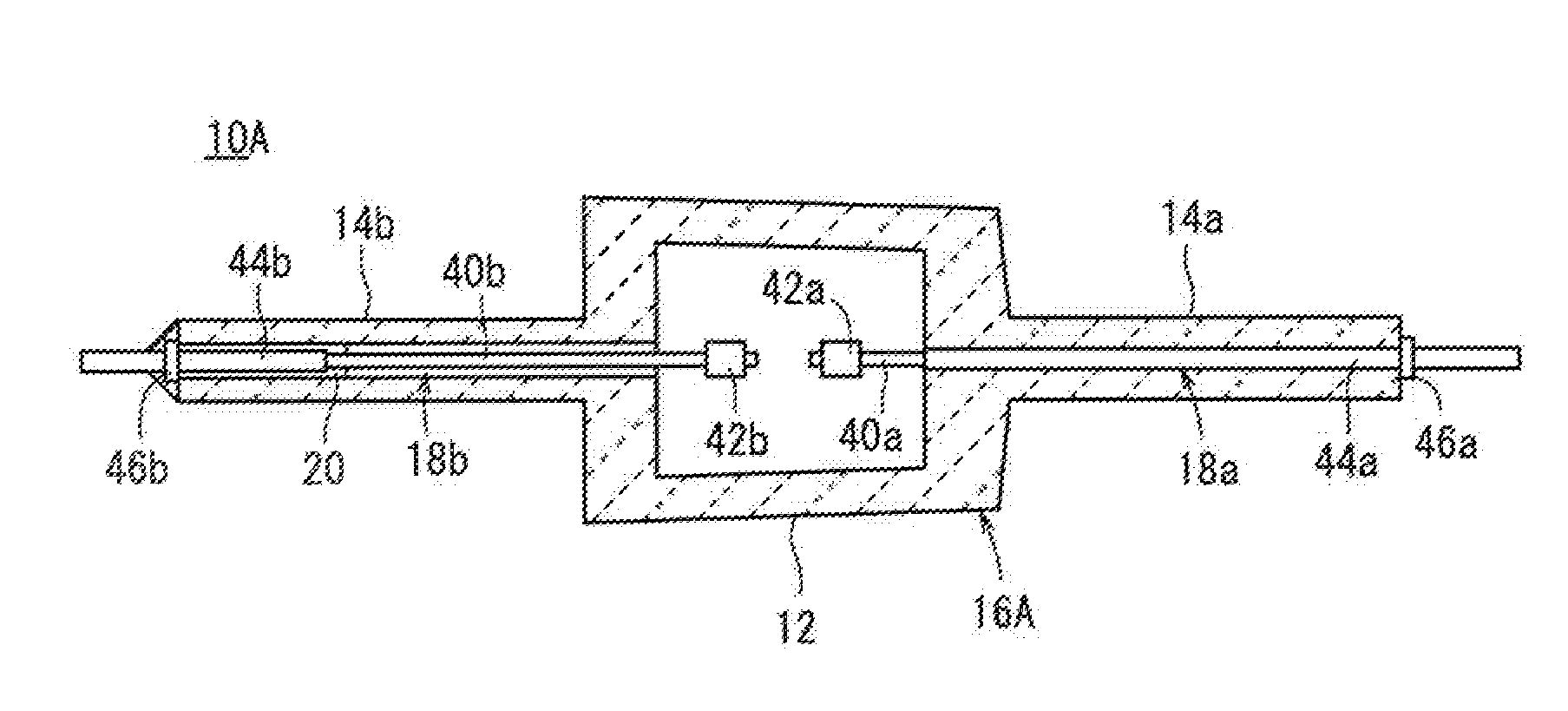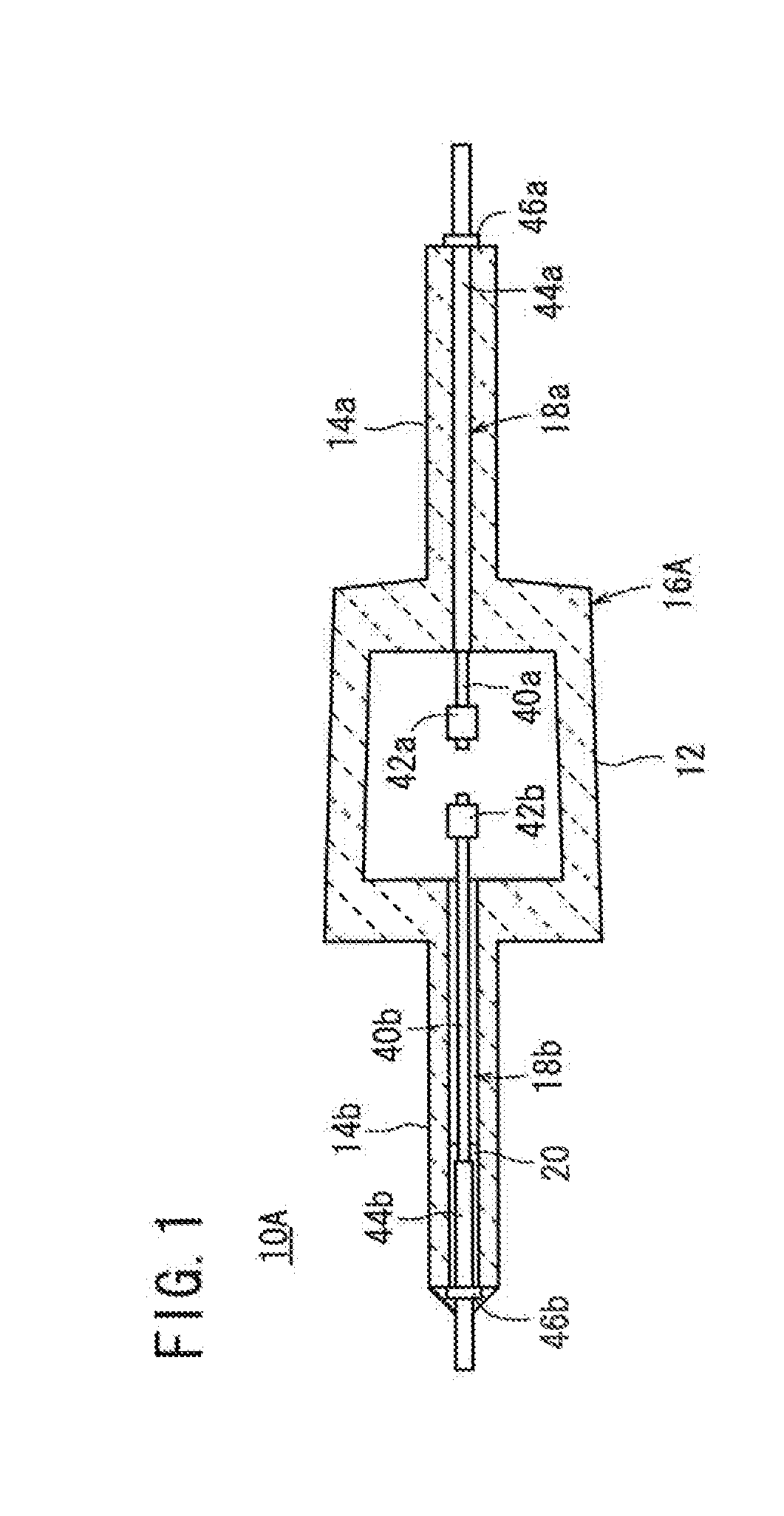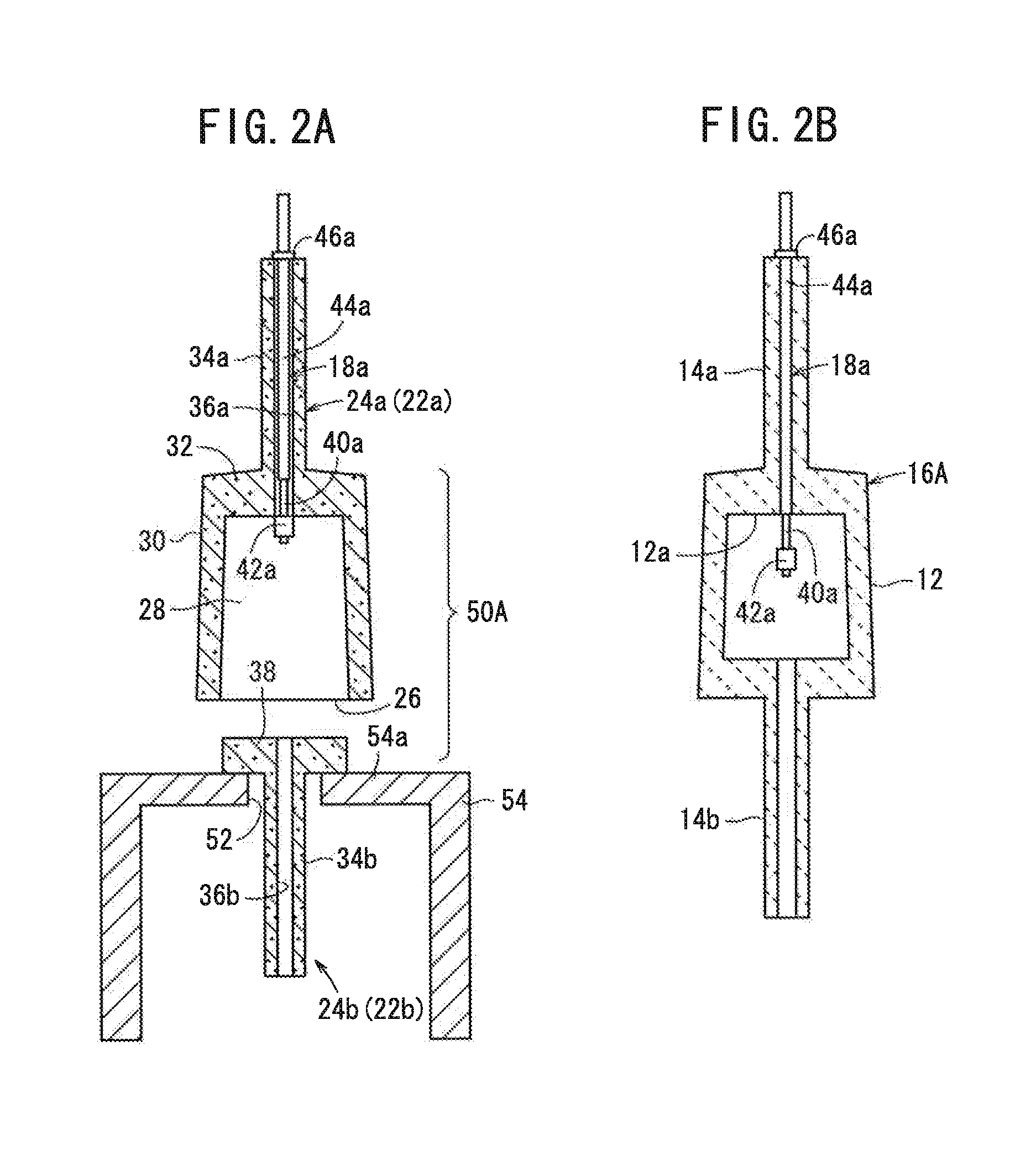Arc tube and method of manufacturing same
a technology of arc tube and manufacturing method, which is applied in the manufacture of electrode systems, cold cathode manufacturing, electric discharge tube/lamps, etc., can solve the problems of emission color variation and arc tube service life reduction, emission color variation and emission color variation, and the efficiency of arc tube reduction
- Summary
- Abstract
- Description
- Claims
- Application Information
AI Technical Summary
Benefits of technology
Problems solved by technology
Method used
Image
Examples
first examples
[0106]Arc tubes fabricated according to Inventive Example 1, Inventive Example 2, and Comparative Example 1 were measured for cracks and leakages from the light emitting bodies. The arc tubes were confirmed for variations of the distal end position of the first electrode, i.e., variations of the distance from the ceramic wall surface to the distal end of the first electrode.
##ventive example 1
INVENTIVE EXAMPLE 1
[0107]Ten arc tubes (first arc tube 10A) shown in FIG. 1 were fabricated by the first manufacturing method shown in FIG. 3. The first capillary 14a of the first ceramic tube 16A had an inside diameter of 0.5 mm and the second capillary 14b thereof had an inside diameter of 0.8 mm.
[0108]A forming slurry for fabricating the first ceramic compact 22a and the second ceramic compact 22b (see FIGS. 4A and 4B) was prepared as follows: 100 parts by weight of an alumina powder and 0.025 parts by weight of magnesia as a raw powder, 30 parts by weight of polybasic acid ester as a dispersion medium, 4 parts by weight of an MDI resin as a gellant, 2 parts by weight of a dispersant, and 0.2 parts by weight of triethylamine as a catalyst were mixed into a forming slurry.
[0109]The forming slurry was poured into a first casting mold and a second casting mold, both made of aluminum alloy, at the room temperature, and was left to stand at the room temperature for 1 hour. After the f...
##ventive example 2
INVENTIVE EXAMPLE 2
[0112]Ten sintered bodies (second ceramic tubes 16B) shown in FIG. 5 were fabricated by the second manufacturing method shown in FIG. 7. The inside diameter of the first capillary 14a was smaller than the inside diameter of the second capillary 14b.
[0113]Ten first ceramic compacts 22a and ten second ceramic compacts 22b (see FIGS. 4A and 4B) were fabricated in the same manner as with Inventive Example 1.
[0114]Thereafter, each of the first ceramic compacts 22a was pre-sintered at 1200° C. in the atmosphere to produce a first ceramic pre-sintered compact 24a, and each of the second ceramic compacts 22b was pre-sintered at 1000° C. in the atmosphere to produce a second ceramic pre-sintered compact 24b. Thereafter, using the jig 54 shown in FIG. 6A, the first ceramic pre-sintered compact 24a, the first electrode 18a, and the second ceramic pre-sintered compact 24b were successively assembled into a second assembled body 50B, which was then sintered at 1800° C. in an ...
PUM
| Property | Measurement | Unit |
|---|---|---|
| Diameter | aaaaa | aaaaa |
| Diameter | aaaaa | aaaaa |
| Diameter | aaaaa | aaaaa |
Abstract
Description
Claims
Application Information
 Login to View More
Login to View More - R&D
- Intellectual Property
- Life Sciences
- Materials
- Tech Scout
- Unparalleled Data Quality
- Higher Quality Content
- 60% Fewer Hallucinations
Browse by: Latest US Patents, China's latest patents, Technical Efficacy Thesaurus, Application Domain, Technology Topic, Popular Technical Reports.
© 2025 PatSnap. All rights reserved.Legal|Privacy policy|Modern Slavery Act Transparency Statement|Sitemap|About US| Contact US: help@patsnap.com



